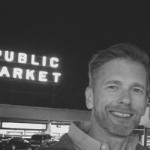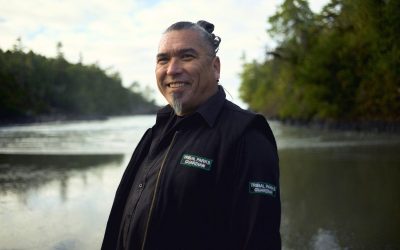
Image credit: Tijana87, iStock
What is a destination’s brand and how do you define it? Destination Think’s Senior Strategic Consultants recently had a lively discussion about this topic in response to an article by Douglas Holt in the Harvard Business Review: “Branding in the Age of Social Media.”
One key claim of the article is: “Companies need to shift their focus away from the platforms themselves and toward the real locus of digital power—crowdcultures.” So, how can destination marketing organizations use word of mouth to influence their destination’s branding?
 William Bakker
William Bakker
Chief Strategist & Partner, Destination Think
“Sometimes there is too much ‘what we want to say’ and not enough ‘what they (the visitors) are interested in.'”
Many destination marketing organizations seem to have a “play it safe” mentality, but when a DMO discovers their destination’s DNA and develops a strong point of view, it can be very powerful.
For example, a destination with a strong ecological focus could offer a perspective on climate change or sustainability. Other destinations have embraced a point of view their locals are passionate about, such as their underdog mentality, or supporting equality rights. Some of these topics are political hotbeds, but it is refreshing to hear about some of the calculated risks these destinations are taking.
Regarding content marketing, it’s important to realize that not all content is necessarily of interest to the visitor. A DMO’s primarily role in this area should be to enable and amplify the stories told by locals and visitors. Sometimes there is too much “what we want to say” and not enough “what they (the visitors) are interested in.” I would caution a destination not to blow their budget on a single, expensive “story” that no-one cares about.

Frank Cuypers
Senior Strategic Consultant, Destination Think
“Niche marketing should follow a nonlinear model.”
Many DMOs are already aware that niche marketing will be a part of their future and I see destinations promoting niches all the time. The problem is that destination marketers often rely on a broadcast model to send niche-marketed and distributed offerings to potential consumers, and the innovation stops here. They fail to listen to consumers, instead making themselves the “Storyteller Number One” superhero for their destination.
This is to be expected because for decades, marketers have been trained to “make a difference” or to “stand out in the crowd.” In this linear, broadcast model, the messaging starts with “you” as the source and “they” as the receiver. The subtext is always “we have a lot to say but we don’t care (enough) about you to listen.”
To support this idea, B. Joseph Pine II & James H. Gilmore have written about “the experience economy” as a transitional phase which leads into a stage called “the transformation economy”. Destinations need to understand the aspirations of individual consumers while guiding them to fully realize those aspirations in order to succeed. This can only be done in a dialogue, which is a circular, nonlinear and interactive approach. Gary Vaynerchuck has also explored this insight in his book “The Thank You Economy,” where he says that we have to replace “branding” with “care” for the consumer.
 Darren Roberts
Darren Roberts
Group Director, Client Services, Destination Think
“Collecting data from content shared online can help educate the DMO and provide ideas on how to capitalize on the subcultures.”
Great points. I would add that brands still have opportunities to create and identify subcultures that are relevant to them. We like to think that all of the subcultures in travel have been discovered and will remain relevant, but that’s because humans like to think the person they are today is the one they will always be (see this TED talk on that phenomenon). I mean, who could ever have imagined hipsters as a recent subculture or hippies as one that is (mostly) over.
Take coffee culture as an easy example. Before Starbucks, we were all willing to drink bottomless cups of coffee at the local diner. People hadn’t truly identified as coffee drinkers or snobs as yet. In general, we had no concept of what a good cup of coffee tasted like. Regardless to how you feel about the brand today, Starbucks created the coffee trend and awareness. Now there are Starbucks lovers and haters precisely because of the awareness we now have of the subculture. In places where awareness is already high – Italy, for example – the chances of failure for a brand like Starbucks are high because the subculture of the coffee drinker is already well established so meeting their needs will be a challenge for the newcomer. In places where little coffee awareness exists, the impact the brand can make is larger.
What does this mean for DMOs? Every destination has an opportunity to learn about and identify their subcultures. They can identify and in some cases create the relevant groups to maximize their offerings. Not only those groups that are growing, but also those that are dying or were never really there to begin with. Branded experiences can then connect in a meaningful way with their relevant subcultures—which is all that anyone wants when they travel, connections that are relevant to themselves. I think some destination brands understand this, but many don’t. As a start, collecting data from content shared online can help educate the DMO and provide ideas on how to capitalize on the subcultures to help move the needle.
 William Bakker
William Bakker
Chief Strategist & Partner, Destination Think
“If there’s a match between a person’s identity and the destination’s DNA, there’s a strong possibility that travel is an outcome.”
I think the strongest opportunity is when you speak to an important part of someone’s identity or passion. If there’s a match between a person’s identity and the destination’s DNA, there’s a strong possibility that travel is an outcome. Amp that up by offering the experience that will express that identity, giving someone status within their community, or providing support to a cause, and you have a winning ticket. I think that should be the key consideration when selecting niches. Destination DNA needs to align with target audience identity.
To illustrate: This is the best meal I’ve ever had because it aligns with who I am, or who I pretend to be.
But the identity needs to be real. It needs to align with the destination’s DNA. You can’t pick a niche and fake it. Starbucks in Italy would be perceived as faking it, because they are. On the other hand, fake can become your identity. See Disneyland for an example.
 Aaron Nissen
Aaron Nissen
Senior Strategic Consultant, Destination Think
“A tourism experience is a deeply personal journey that is reflected by the visitor’s life story.”
Darren is spot on. Subcultures start with audience identification and move on to reverse engineer who that person is.
I think some DMOs have gone in the wrong direction by treating tourism branding as similar to product branding. Tourism is unique because the experience enables a deeply personal journey that is reflected by the visitor’s life story.
The politics of stakeholder management also plays an important factor in the decisions DMOs make. They need to keep their stakeholders happy. Imagine if you could break down a destination into niches and experiences and measure the revenue of those sectors. That would change how the DMO invests.
Niches that are culturally relevant are the future, and destinations need to avoid the types of mass communication that can ruin a destination’s DNA.
 Mikala Folb
Mikala Folb
Content Strategist, Destination Think
“DMOs want to be the band. But they need to be the stage.”
Brand is the combination of thousands of stories curated by the DMO. How could a brand ever sum up your personal experiences in a destination?
To use a music analogy: DMOs want to be the band. But they need to be the stage. They can best connect with their fans (visitors) by giving up the reins to let humour, boldness, daring, home truths and honesty shine through. By giving up the control, they’ll gain more powerful stories to share and build from.
What most greatly influences your destination’s branding? Join the conversation by leaving a comment.
Related reading: Why place branding needs to be built from the inside









0 Comments